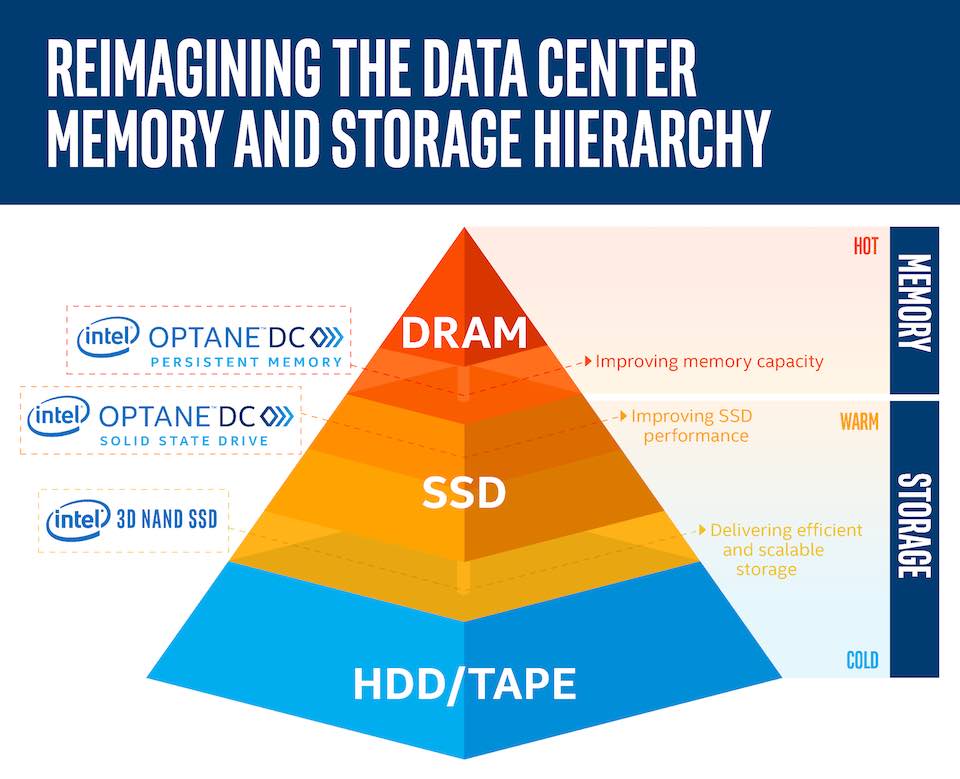Intel Optane DC persistent memory represents a new class of memory and storage technology architected specifically for data center usage. One that we believe fundamentally breaks through some of the constricting methods for using data that have governed computing for more than 50 years.
Unlike traditional DRAM, Intel Optane DC persistent memory will offer the unprecedented combination of high-capacity, affordability and persistence. By expanding affordable system memory capacities (greater than 3 terabytes per CPU socket), end customers can use systems enabled with this new class of memory to better optimize their workloads by moving and maintaining larger amounts of data closer to the processor and minimizing the higher latency of fetching data from system storage. Intel’s persistent memory will be available in capacities up to 512GB per module.
High-capacity persistent memory in the data center allows applications to run without incurring the latency penalty of going out to storage over the PCIe bus. As developers adapt software, this new memory class is designed to enable cost-effective, large-capacity in-memory database solutions; provide greater system uptime and faster recovery after power cycles; accelerate virtual machine storage; deliver higher performance to multi-node, distributed cloud applications; and offer advanced encryption for persistent data built into the hardware.
These benefits will have a significant impact on real-world data center operations. For example, for planned restarts of a NoSQL in-memory database using Aerospike Hybrid Memory Architecture, Intel Optane DC persistent memory provides a minutes-to-seconds restart speedup compared to DRAM-only cold restart. On memory-intensive workloads such as Redis IMDB server, Intel’s persistent memory enables higher memory capacities, delivering more server instances at the same service level agreement (SLA) performance when compared to a system configured with just DRAM.
Andrey Kudryavtsev is SSD Solution Architect in the NVM Solution Group at Intel. His main focus is the HPC area, where he helps end-customers and eco system partners to utilize the benefits of modern storage technologies and accelerate the SSD adoption for NVMe. He holds more than 12 years of total server experience, the last 10 years working for Intel. He is the guru of engineering creativity and is an influence in his field. He graduated from Nizhny Novgorod State University in Russia by Computer Science in 2004. Outside of work, he is the owner and coauthor of many experimental technologies in music, musical instruments, and multi-touch surfaces.





